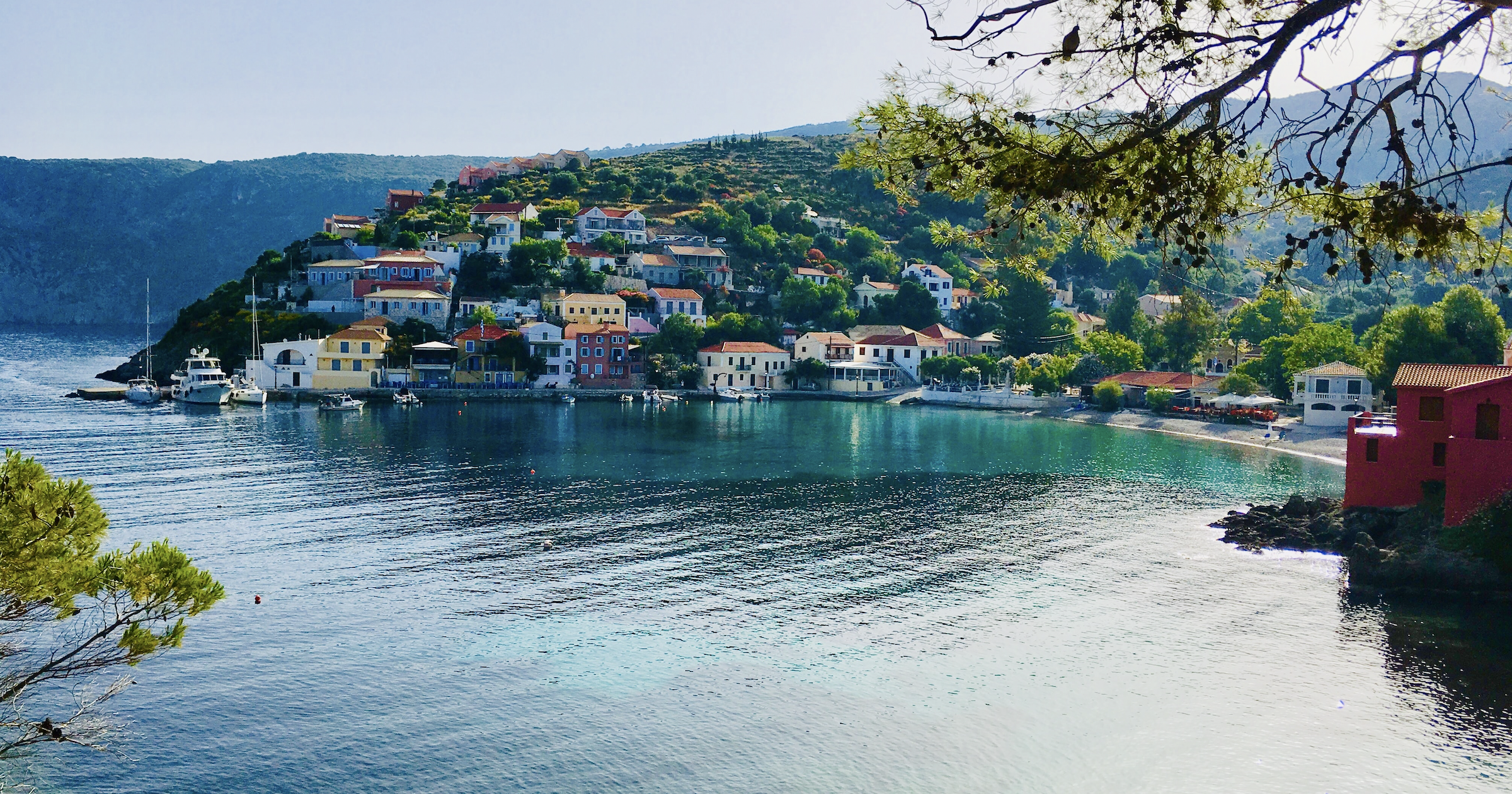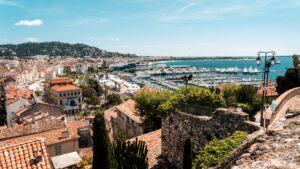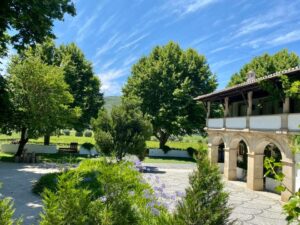I’ve visited many of the Greek islands, but Kefalonia is the only one I’ve been back to multiple times. In my opinion, it’s one of the best Greek islands to visit if you want an authentic experience.
I was lucky enough to spend time sailing around the Greek islands, and island hopping is something I definitely recommend. However, it’s also nice to relax a bit and explore each island individually.
If you want to explore the islands but don’t know where to start, I’d suggest Kefalonia; it’s got a bit of everything.
Here’s what you need to know about Kefalonia before you go.
Introduction to Kefalonia
With all these Greek islands, it can be a bit confusing; there are 6,000 of them after all (227 are inhabited).

Kefalonia is also sometimes spelled Cephalonia, Kefaloniá, or Kefalloniá (Κεφαλονιά in Greek) and in the past it was also called Kefallinia or Kephallenia.
The island is one of those located West of the mainland; it’s part of the Ionian Islands, one of the main groups of Greek islands.
Here’s Kefalonia highlighted in red.

Kefalonia has 36,000 inhabitants (about 3 times less than Prince Edward Island in Canada). It’s the largest Ionian Island, and the 6th-largest in Greece (about 1.5 times the size of Montreal Island).
The best beaches in Kefalonia
Not all Greek islands have great beaches, but Kefalonia certainly does.
Easily the most famous beach on the island is Myrtos Beach. There are pictures of it everywhere, and it has appeared in several films. And yes, it is absolutely stunning.
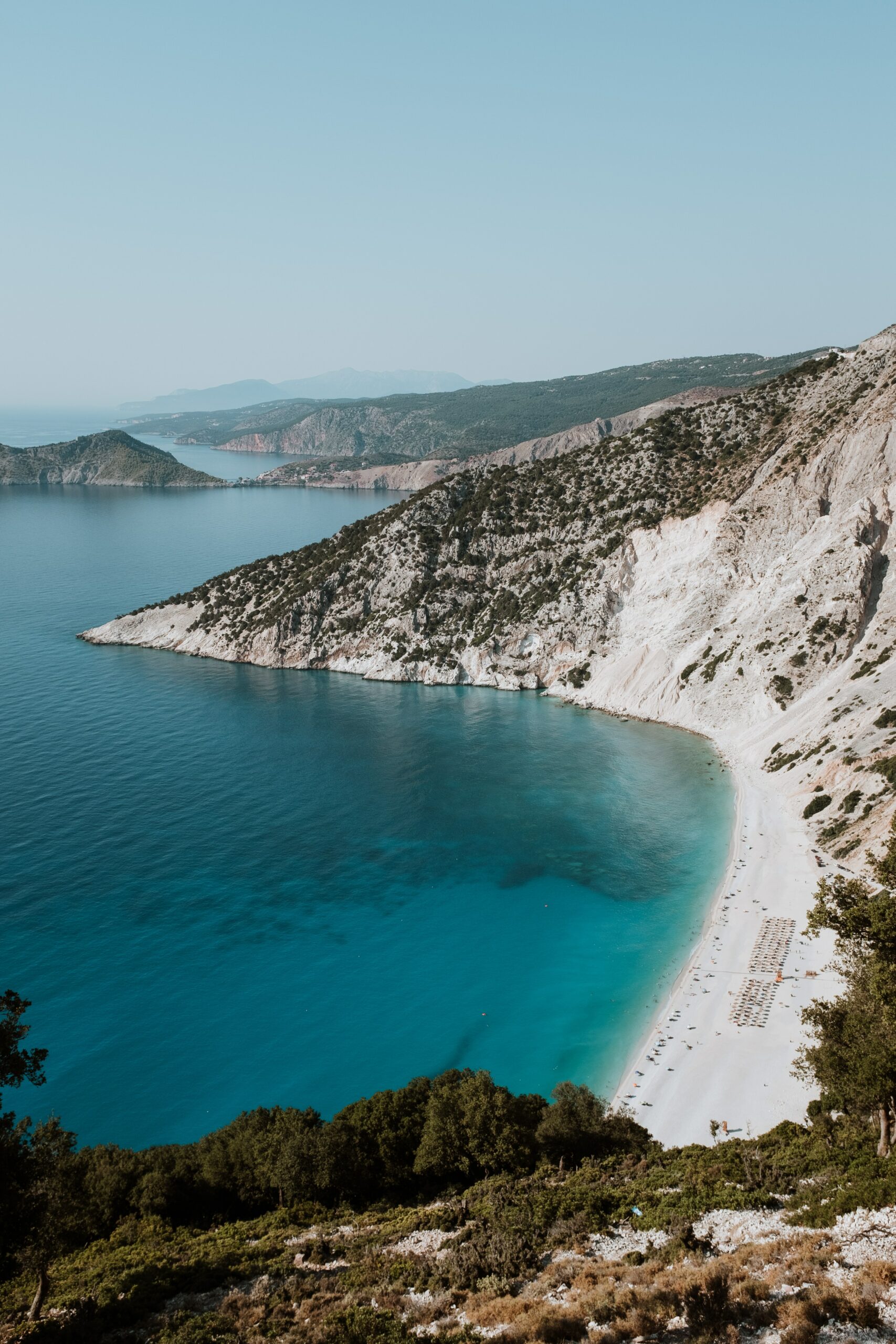
However, many people who visit the beach are ultimately disappointed.
Firstly, the beach is very pebbly and can be painful on your feet unless you wear shoes.
Secondly, there is basically no shade, and the sea breeze makes umbrellas challenging to use.
Thirdly, the sea floor drops away very quickly, so there is no area to really walk around in the water or for children to play.
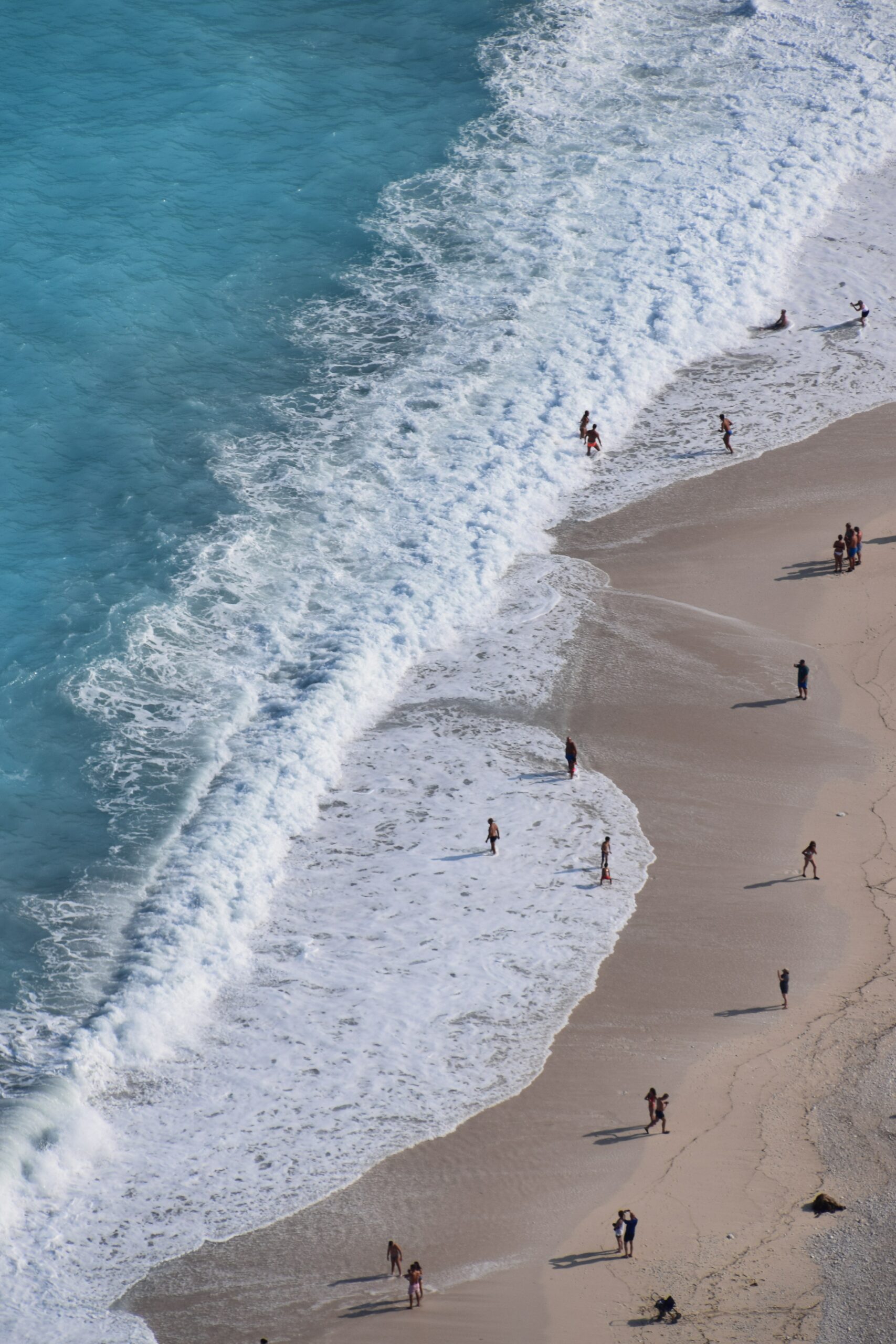
Finally, the waves are VERY strong and crash onto the beach. So getting in and out of the sea can be hard, even for good swimmers. You need to time your entrance and exit to avoid the waves.
Add in the fact that it’s usually jam-packed and, all in all, it’s not that relaxing.
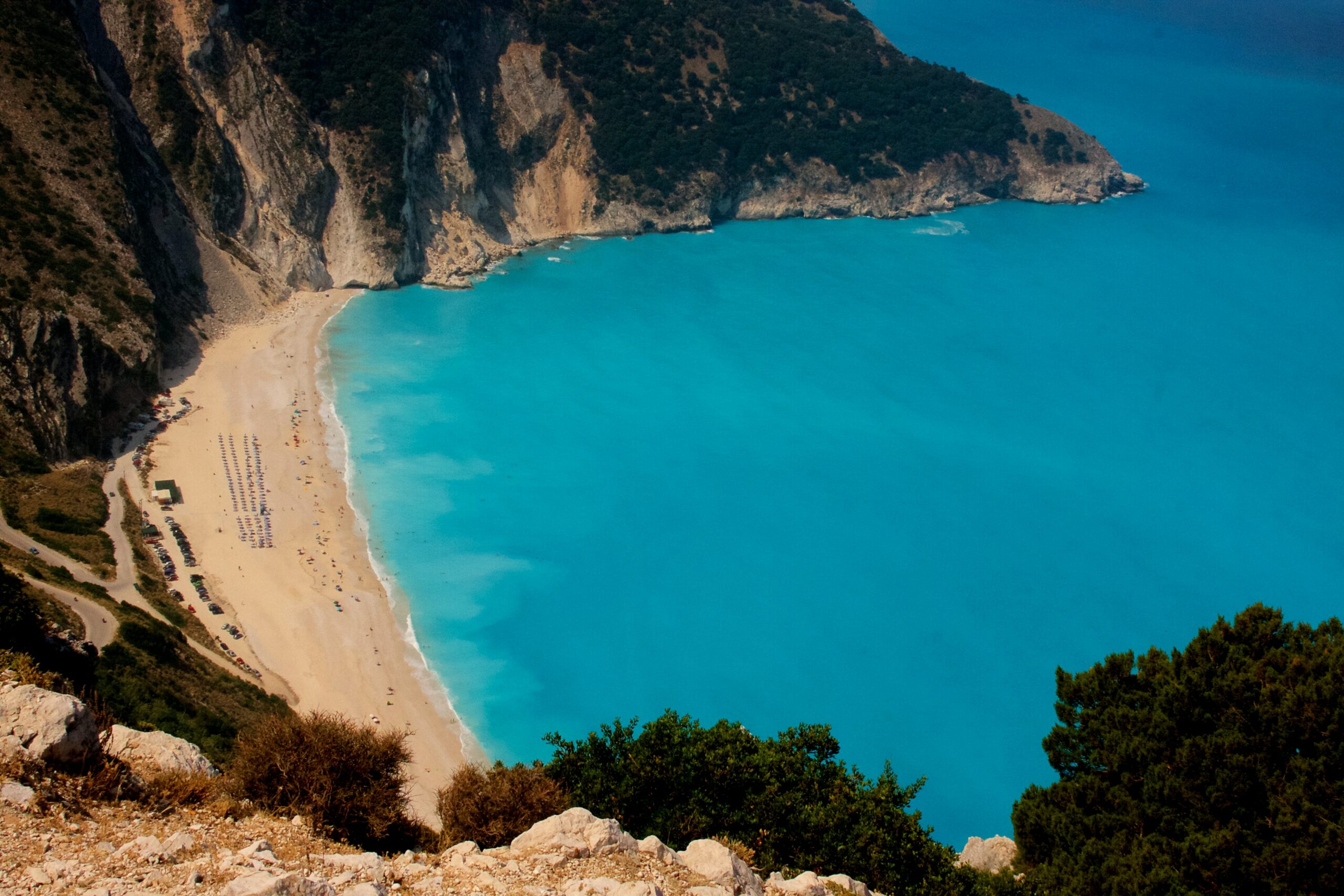
If you want to actually relax on a beach, check out some of these 4 other Kefalonia beaches instead!
Makris Gialos Beach
- Sandy with gently sloping shallows
- Beach clubs, restaurants, and bars
- Close to both Argostoli and Lassi
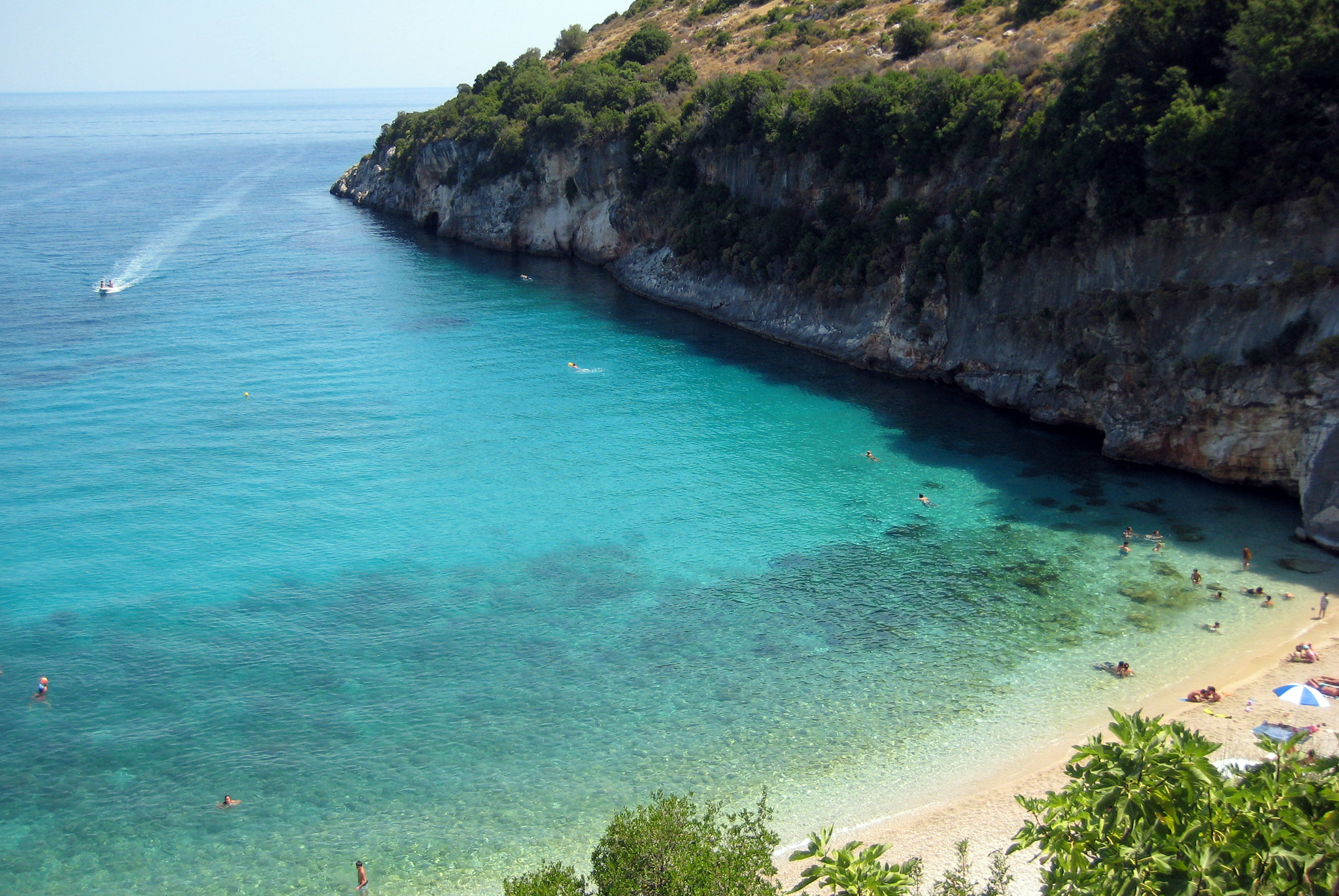
Fteri Beach
- Remote, isolated, crystal water, and long stretch of white pebbles
- Incredible views and some shade from trees
- Close to Thinaia
Kaminia Beach
- Popular with families, no watersports, and excellent shallows
- Be careful of the turtle nests
- Close to Skala
Xi Beach
- Unusual bronze sand, “healing” clay, and long shallows
- Beautiful cliffs and great nearby facilities
- Close to Lixouri
Things to do in Kefalonia
Kefalonia isn’t as modern or cosmopolitan as some of the other islands but it makes up for it with authenticity, natural beauty, and charm. Ionian Islands generally have more Venetian and Italian influences than the other Greek island groups (they’re all quite different).
Here are a few tips on things to do in Kefalonia.
Beaches
The beaches are a major attraction since they are quieter in Kefalonia than on other islands.
Those in the previous section are just a few of the beaches on the island.
If you want total privacy, you can get boat tours where you can admire the island from the Ionian sea and spend your days in hidden coves and on beaches that aren’t accessible by land.
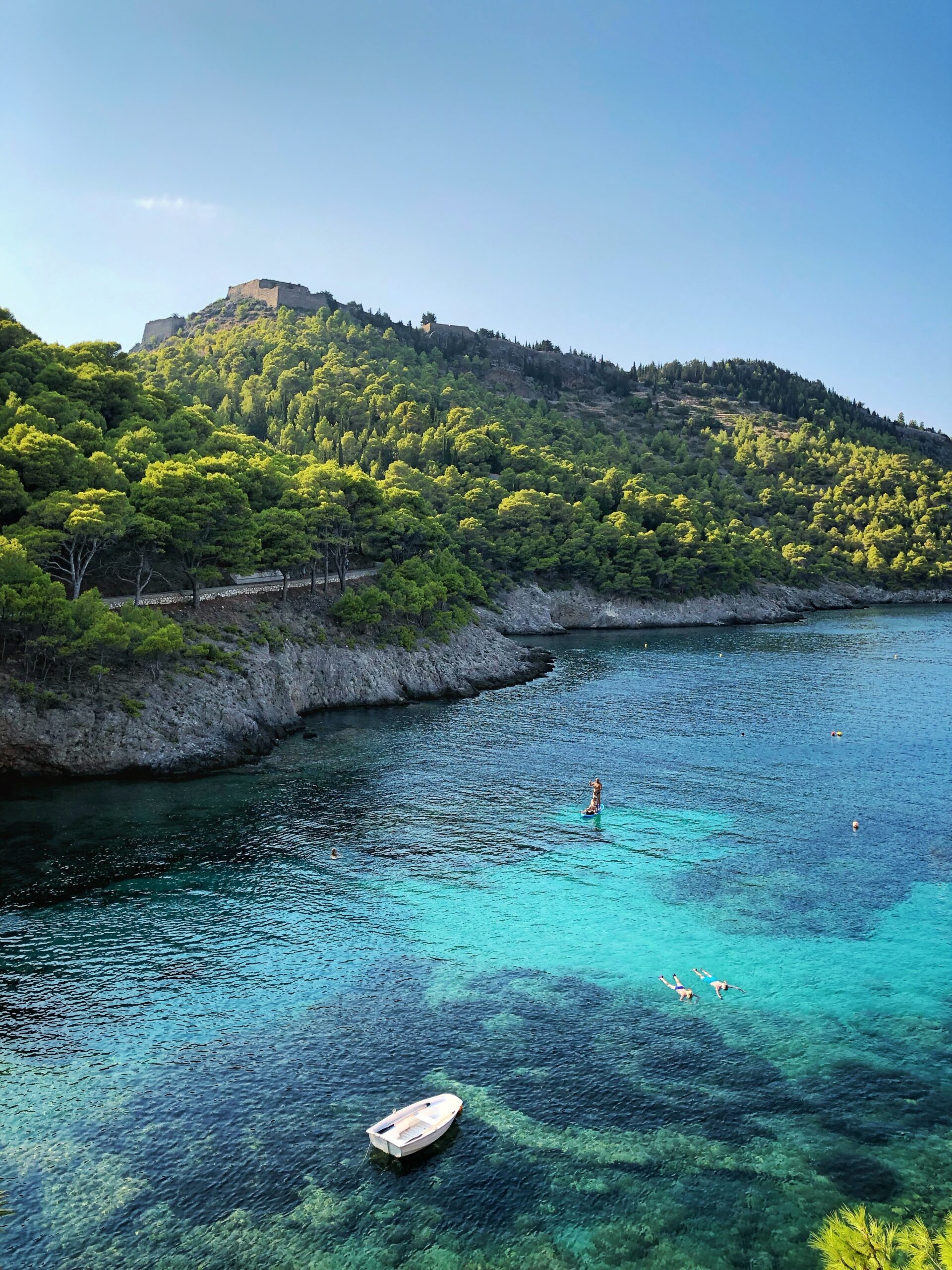
Villages
One of the best things to do in Kefalonia is simply to get a rental car and drive around, visiting the smaller towns and villages, and trying all the amazing food. The villages all have their own unique histories with monuments, ancient buildings, and small museums.
As you explore, you’ll find lots of market stalls on the roadside with farmers selling locally-grown foods. It’s worth taking the time to stop and try everything and talk to the locals.
Asos is one of those photogenic villages, for example.

Mount Ainos
If you’d rather admire the island from up high, climb up to Mount Ainos for a view of the surrounding countryside or a view of the sea.
It’s a fairly easy walk, and if you fancy exploring the little villages nearby, you can make it a full-day activity.
Caves
The Melissani Cave and the Drogarati Cave are total must-sees and are really unique.

Ruins
In the 1950s, a devastating earthquake destroyed much of the island and you can explore abandoned villages and crumbling ancient ruins at your leisure.
Nightlife
Kefalonia is not the island to visit if you’re looking to go clubbing every night until the sun comes up. But that doesn’t mean you can dance until the early hours.
Unlike other islands, which have a vast range of bars and clubs, Kefalonia only has a few actual nightclubs. Argostoli has 2 popular clubs, Bass and Katavothres, making it the best town for nightlife. Although they usually close at around 2 or 3 in the morning, so you can’t dance until the sun rises!
You’re more likely to find bars with small dance floors or people drinking and dancing in the streets outside. Fiskardo, Lassi, and Skala have a fun range of beach clubs and lounges that play music until around 1 or 2 AM. There are also a few clubs on the outskirts of town, but getting there and back can be a challenge.
For a more eclectic music mix, including some disco, 90s music, hip hop, and traditional Greek music, Kastro Club in Fiskardo is very fun. And it’s popular with travelers and locals.
Getting to Kefalonia
As is the case with most Greek islands, there are only 2 ways to get to Kefalonia: flights or ferries.
Flights to Kefalonia
Don’t ever buy flights from Canada to Kefalonia (or any Greek island) on 1 and only ticket!
There are flights from Kefalonia’s airport (EFL) to a few European cities. Keep in mind these are all seasonal flights only, except for domestic flights to Athens (ATH) and Zakynthos (ZTH).
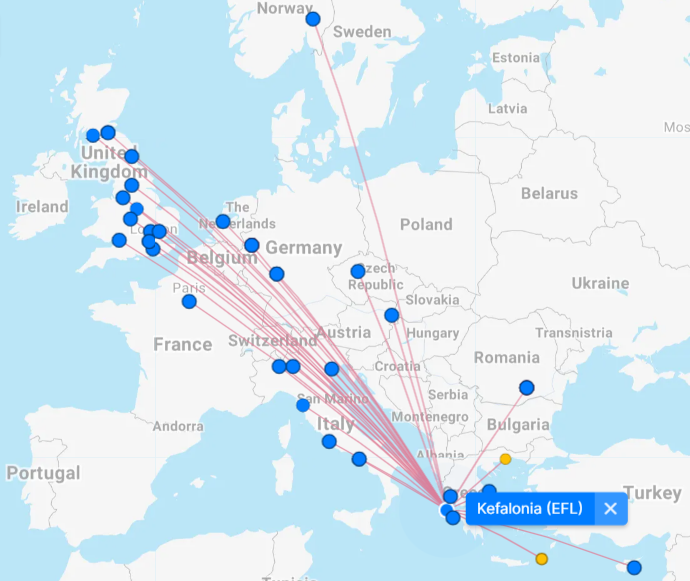
Remember, flights here in Europe are often very cheap, like $54 one-way from Kefalonia to London!
That means the self-transfer tip can save you a lot of money to get to most destinations, including Kefalonia!

Since prices are usually so cheap, it’s often best not to waste your more valuable rewards on these flights. Just pay in cash or use your stash of less-valuable simple fixed-value rewards, like the TD First Class Travel Visa Infinite Card’s current free $825 welcome bonus. For more information, come join Flytrippers on Wednesday night for our monthly video of the best travel rewards deals of the month.
But if your dates are expensive, you can use valuable rewards like Aeroplan points. There are 2 of the 45 Aeroplan partner airlines that fly to Kefalonia: Austrian Airlines (from Vienna) and Olympic Air (from Athens).
Ferries to Kefalonia
The island is one that’s located pretty close to mainland Greece, so it’s not a long ferry ride. And Greek ferries are a classic experience.
So if you’re starting in Athens (or even arriving from beautiful Albania, the rest of the Balkans, or nearby Türkiye), Kefalonia is most often reached by ferry from Kyllini or by ferry from Patras.
(Also, buses from Athens can take you directly to Kefalonia — the ferry is included in the bus ticket!)
Patras is where there’s a good hotel to maximize your Marriott points by the way, which is surprising since Greece is such a popular destination (maybe a stay there can be combined to a trip to Kefalonia). It’s the Moxy Patra Marina hotel, which costs as little as 10,500 points per night (42,000 points for 5 nights with the Marriott “Stay for 5, Pay for 4” benefit) outside of the summer season.
(Unlocking the Marriott Bonvoy American Express Card’s current welcome bonus will give you 53,000 points, which is enough for 8 free nights in Bali and a few other destinations by comparison!)
There are also ferries to Kefalonia from other nearby islands like Corfu, Zakynthos, Lefkada, and Ithaka.
Finally, there are also ferries to Kefalonia from Italy.
Getting around Kefalonia
As mentioned, Kefalonia is the biggest of the Greek islands in the Ionian sea. There is lots to see and do, and while public buses run regularly between all the major towns, many of the most beautiful natural sites are relatively remote.
So you should get a rental car, or at the very least, a rental scooter to get around the island a bit. The roads are fairly good and are well-signposted, so driving is easy.
Having access to a car means you can also really explore the island off the beaten path, like for example Mount Ainos National Park.
Argostoli is the island’s capital and has the most rental places, but you can find some in towns like Fiskardo and Lassi. You can rent cars directly from the airport and the price difference between the airport and the cities seems minimal.
If you don’t plan on traveling around the island much and prefer to spend your time in one place, you should consider renting a boat.
Grab a picnic and head around the shoreline to some private beaches that can only be accessed by sea.
Small motor boats are easy to rent and are very affordable. If you prefer luxury yachts, those are also available in Kefalonia on Sailo and SEARADAR.
Where to stay in Kefalonia
Kefalonia has much to offer, but where you stay will make a big difference. I recommend staying in, or very close to, one of the bigger towns so you can access the facilities and amenities.
There are lots of more remote resorts and small villages in the center of the island, which are very peaceful but can be a pain for things like food, shopping, and visiting the rest of the island.
Here’s a rundown of the most popular towns and what you should know before you book.
Argostoli
As the capital, Argostoli is, therefore, busier and has more to offer than other towns. You’ll find plenty of bars and restaurants to try. If you have dietary restrictions, you’ll have more restaurant choices here as they are used to catering to visitors.
There is a good range of hotels, most on the waterfront. Airbnb and Vrbo rentals are generally apartments until you get to the outskirts, where you can find villas.
You’ll find a good range of prices, from cheaper, more traditional hotels to chic, modern 5-star hotels.
Fiskardo
Fiskardo is one of the most beautiful towns on the island, with incredible Venetian architecture and brightly colored buildings. The stunning harbor is the main appeal, so the small downtown area is based around the water, and plenty of fishing and sailing companies are based here.
It’s more relaxed than the capital, so the bars, restaurants, and hotels are more traditional and spill out onto the harbourside. It’s significantly smaller than Argostoli, and it’s the kind of place where everyone knows everyone.
If you want to enjoy the benefits of staying in town but enjoy a quieter, more authentic experience, Fiskardo would be better than the capital. However, Fiskardo has a reputation for being slightly more expensive as it is very well-maintained and more sophisticated.
Skala
If you want a good base that has everything you need, amazing beaches, good bars, and a selection of hotels and Airbnb/Vrbo rentals, Skala is perfect.
It feels much more touristy, and many new buildings have popped up in recent years to cater to visitors. As such, it’s a convenient place to stay, but it lacks the charm of other places.
However, regarding the choice of bars and restaurants, shops, and accommodations, Skala has the most variety and is perfect for traveling on a budget.
It has a lot to offer and is also well-situated in the south for exploring other places and has access to some of the best beaches on the island.
Agia Efimia
This adorable little fishing village has retained much of its traditional Greek charm, making it one of the most picturesque places to stay.
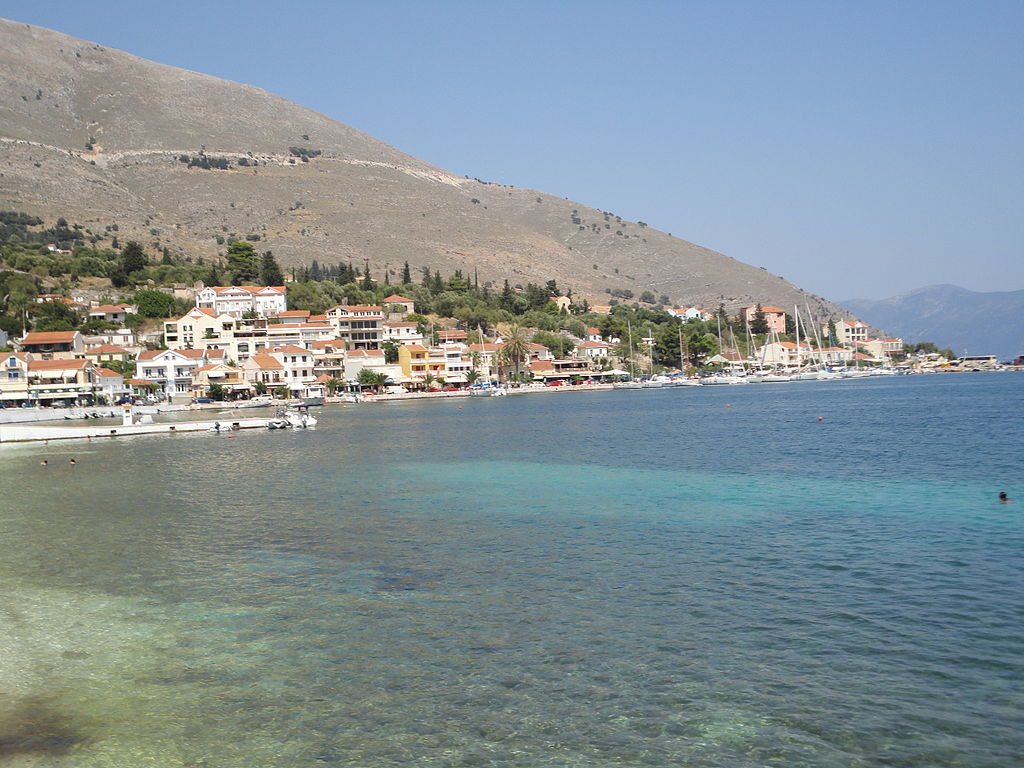
It’s small, so places book up fast, and there isn’t a massive number of places to choose from. If you want to stay in Agia Efimia, it’s best to pick an Airbnb, an apartment for rent, or a small B&B. Prices are really affordable, and there is still a reasonable number of bars and tavernas to eat at.
Agia Efimia famously has some of the best food, so you’ll find lots of people staying elsewhere on the island visiting for lunch. It has a greener backdrop as well. The only downside is that it’s much quieter in the evenings, so not good if you fancy sipping cocktails until late.
Other places
There are also plenty of private villas and small apartments to rent in many villages dotted across the island.
Many locals rely on visitors; plenty of properties are available. So you’ll always be able to find somewhere to stay for a reasonable price.
How much to budget for a week in Kefalonia?
Kefalonia is more affordable than some of the other Greek islands, which are not budget-friendly. While the island does have its fair share of luxury resorts, 5-star hotels, and over-priced cocktails, it’s also very easy to have a budget stay.
Food budget in Kefalonia
Food on the island is fairly affordable as so much produce is grown locally.
You can enjoy delicious gyros, fresh salads, and traditional fish dishes for just a couple of euros. Simple, affordable dinners can cost as little as €10, with fresh fruit for breakfast costing under €5. You can still eat well for under €20 a day if you’re on a budget.
Accommodation budget in Kefalonia
Accommodation on the island is very varied.
Private villas and luxury resorts can be very expensive but aren’t completely unreasonable at around €200 a night for a hotel or upwards of €500 per night for a villa.
For cheaper hotels, B&Bs, and more traditional Greek inns, you can pay anywhere from €10 to €30 a night. Kefalonia unfortunately does not have any hostels.
Activities budget in Kefalonia
Many activities are outdoors and don’t even cost a thing, apart from the fact that as a large island with a low population, there is a cost to get to almost every activity.
Transport budget in Kefalonia
If you’re on a tight budget, public bus tickets between towns cost from €1-€3, depending on the trip.
Once in town, everything is walkable.
However, to make the most out of your trip, you should consider getting a rental car, even if it’s just for a few days.
They start from just €30 per day on RentalCars.com (almost all credit cards cover damage insurance for free). And don’t forget that Hotwire can often provide good savings thanks to its opaque deals.
Want to get more information about the Greek islands?
Summary
I’ve visited many Greek islands, and the only one I’ve gone back to multiple times is Kefalonia. It’s one of the most authentic and beautiful Greek islands, and I highly recommend it for your next trip to Greece!
What would you like to know about tips to visit Kefalonia in Greece? Tell us in the comments below.
See the deals we spot: Cheap flights
Explore awesome destinations: Travel inspiration
Learn pro tricks: Travel tips
Discover free travel: Travel rewards
Featured image: Asos, Kefalonia (photo credit: Mac McDade)

